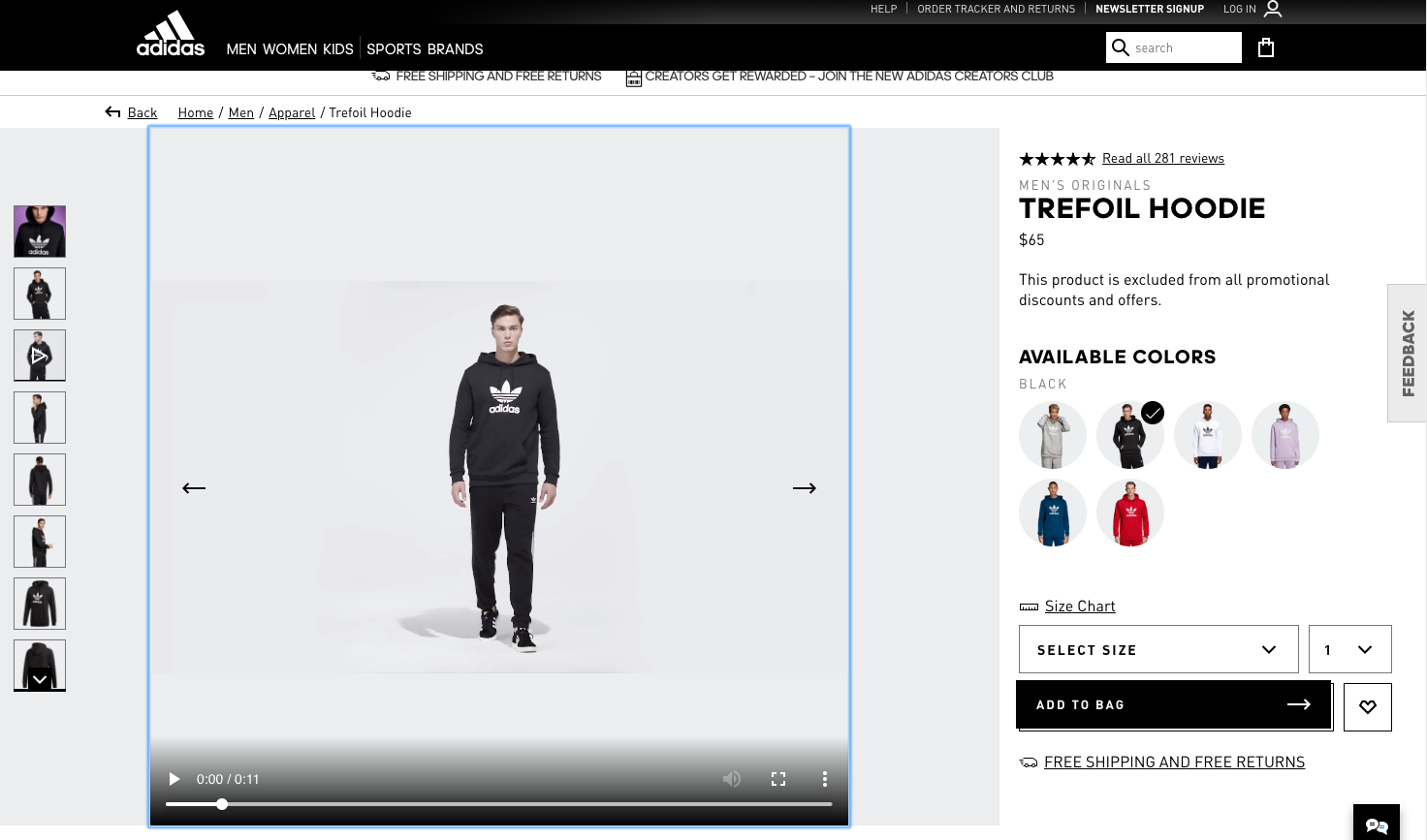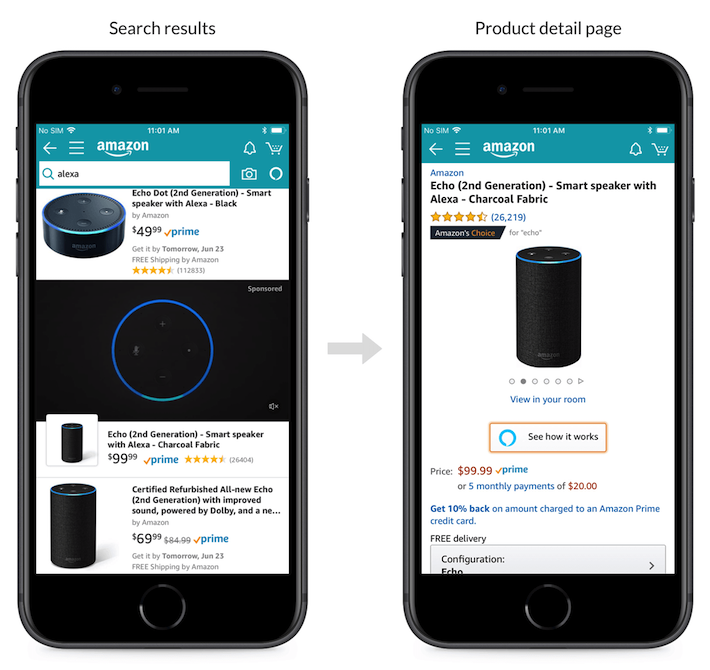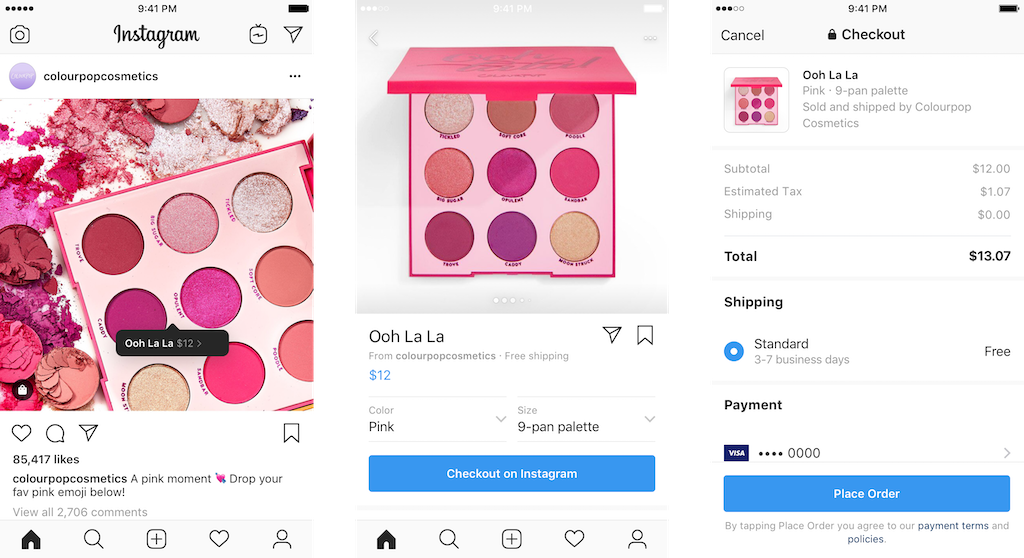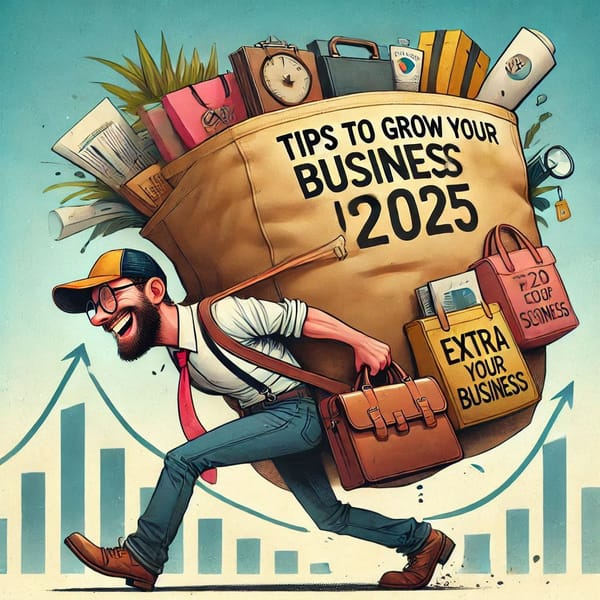Video marketing is a constantly evolving landscape. You don’t have to look far to find examples of ways video has left a mark in just the last year alone - the addition of livestreaming capabilities to the social platform LinkedIn, Samsung’s launch of a vertical TV, even full length movies being shot on iPhones, like Steven Soderbergh’s Unsane. Use of video has spread far and wide and will only continue to grow in the months and years to come.
But what does that mean for your e-commerce website? How can you incorporate the latest video trends in a way that makes sense and will help your users convert?
Below are six video trends that are changing the marketing landscape, some tips and tricks for getting started.
6 Ecommerce Video Trends of 2019
1. Using Product Videos on Product Pages
The ability to add video content on your ecommerce pages has been around about just as long as ecommerce itself. But now, brands are incorporating product videos more elegantly and more seamlessly on their store pages than ever before.
Just as you can add product images depicting multiple angles, fits, colours, and sizes of a product, you can also add videos that show the same thing. However, because video shows movement and scale, it can often be a better indicator of quality and whether or not a product is right for an individual user.

2. Integration of Video with Chatbot Technology
Chatbots used to be this weird, spammy thing that no one took seriously. But since Facebook launched Messenger and CRMs like Hubspot started adding easy-to-integrate chat functionality to websites, chatbots have become the next latest wave of marketing technology.
When you combine chatbots with video marketing, you get a much more interactive experience than you would with either tool alone. Besides the fact that chatbots cut down on operational costs and encourage a higher number of click-throughs, they also facilitate faster and easier communication with a more targeted audience.
And since video is the leading content type as far as engagement goes, the two together provide a one-two punch when it comes to optimizing for conversion and other marketing metrics.

3. Creation of Animated Video Explainers
Ecommerce is not only great for selling items like shoes or clothing, but also essential for selling things like software programs, B2B services, and more. In certain industries, it can be hard to explain with only text what exactly your product or service does, which can inhibit sales and leads.
That’s where animated videos come in! Animated videos are great at explaining difficult concepts in a clear and direct way. They also help maintain a user’s attention and evoke emotion that can deeply resonate with viewers.
Though you might not include an animated explainer video on a store page, adding it to your homepage or how it works page can give those who browse your site more incentive to buy and explain what they need to know in a more direct way.
4. Expanded Video Capabilities on Ecommerce Sites
As Amazon’s stronghold on ecommerce continues to tighten, so does their commitment to expanding video capabilities on their site. The same can be said for sites like Etsy, eBay, and even social media platforms which are trying to boost their ad sales and revenue. Turns out, video is the key to boosting online sales!
We’ve already seen tremendous growth on these ecommerce sites when it comes to their video capabilities - Amazon added video to product pages, they’ve grown their video ad units, and they’ve even expanded their brand pages to include videos in a variety of ways. eBay also gives sellers the option to include short videos in their listings, and in 2016, Etsy added Shop Videos, allowing sellers to tell users a little more about themselves and their products. Even crowdfunding sites like Indiegogo and Kickstarter use video to help creators meet their fundraising goals.
These video functions will only continue to grow as video keeps driving revenue not just for client-facing ecommerce companies, but ecommerce stores across the board.

5. Growth of Social Shop Platforms
Facebook has had shoppable pages for quite a while, including clickable shop ads, buy functionality on brand pages, and even the launch of Facebook Marketplace. But other platforms are only now jumping on the bandwagon, working to make their pages and ads more conversion-friendly.
Just a few months ago, Instagram announced the beta launch of Checkout - a new function that allows users to tap on products they see in their Instagram Feed and purchase that product without ever leaving the app.

Pinterest similarly launched Catalogs and Shopping Ads, which help users find products relevant to them and then links your Pinned content directly to your ecommerce store. This transitions people who are browsing mode into shopping mode more quickly and naturally, and facilitates the entire purchase process for them.
Soon, we’ll see more social platforms doing this, and we’ll also see those with shopping features already enabled advance those features, coming up with even more ways to incorporate in-app and on-site shopping tools in a user-friendly way.
6. Customer Reviews as Important as Ever
Before making a purchase, 62 percent of consumers watch a product review video. Influencers have made a living creating online reviews which boost conversion rates, when added to your website or product pages.
This trend has been around for years and shows no signs of slowing down. The only difference is the more video grows, the more people will expect to see video reviews on your site.
Kudobuzz Social Reviews helps you incorporate customer reviews on your ecommerce pages with ease. You’ll want to include everything from written reviews, to photos, to star ratings but video reviews will be the most engaging for your users and have the greatest potential to convert users at scale.
8 Tips and Tricks to Get Started
How do you start using video to boost your marketing metrics? We’ve got a few tips to help!
1. Start creating videos if you haven’t already!
2. Can’t afford to make them in-house? Hire an affordable video production agency.
3. Use video everywhere, not just your store pages.
4. Don’t neglect your social media pages. Organic video posted here helps boost sales.
5. Use paid video ads to expand your brand’s reach and awareness.
6. Make your own videos, but don’t forget to use user-generated content, too.
7. Video on your website should be of high quality, while less far-reaching videos can be more DIY.
8. Don’t forget about video orientation when you’re recording. Vertical videos perform better on mobile devices, while landscape videos are better for desktop experiences.
Conclusion
It’s tough to call video marketing a trend, since trends can come and go. Video, on the other hand, is likely to stay. And thanks to how impactful it is for companies big and small, it’ll continue to be a major feature of most ecommerce sites and pages for years to come.
Post by a Guest Contributor.
Author bio: Hope Horner (Founder, CEO at Lemonlight).
Hope Horner is a three-time entrepreneur that has been featured in Inc.'s Top 25 Entrepreneurs to Watch in 2017, Entrepreneur's 11 Marketing Experts that Could Change Your Business, and Pepperdine’s 40 Under 40. Horner is a regular contributor at Entrepreneur, Forbes, Inc., and multiple other publications where she shares startup insights and scalable solutions. She is currently working on her third startup, Lemonlight, an LA-based business that produces and distributes branded video content at scale









